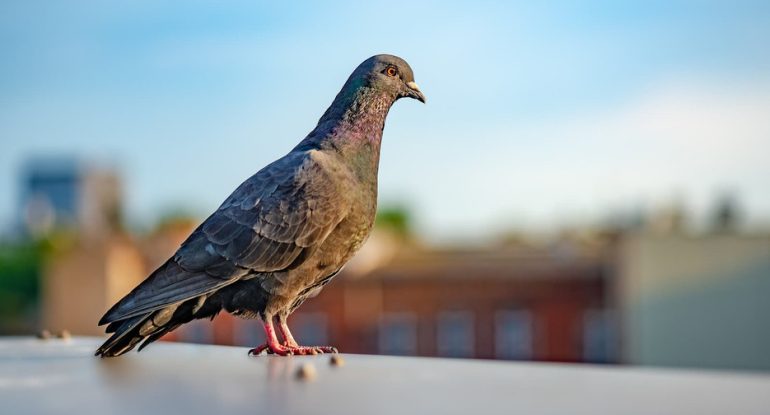Introduction to Pigeon Types and Breeds in the UK
Welcome bird enthusiasts and curious readers! Today, we embark on a fascinating journey through the world of pigeon types UK breeds in the United Kingdom. These elegant feathered creatures have captivated our attention for centuries with their beauty, intelligence, and incredible adaptability. From bustling city streets to picturesque countryside landscapes, pigeons are an integral part of our British heritage.
In this blog post, we will delve into the history and evolution of pigeon types UK, uncovering their diverse origins and remarkable transformations over time. We’ll also explore the wide variety of pigeon types found across the UK and discover their unique physical characteristics that make each breed so distinctive.
History, Evolution and Types of Pigeon UK Breeds
The history and evolution of pigeon breeds is a fascinating journey that spans thousands of years. Pigeons have been domesticated for centuries, with evidence dating back to ancient Mesopotamia and Egypt. These early civilizations recognized the unique abilities of pigeons and began selectively breeding them for various traits.
Over time, different pigeon types UK breeds emerged, each with its own distinct characteristics. The process of breeding pigeons involved careful selection based on desired traits such as size, coloration, flying ability, or fancy features like feather patterns or crests.
As trade routes expanded across continents, so did the popularity of pigeons. Pigeon fanciers from different regions started exchanging birds and crossbreeding them to create new variations. This led to the development of diverse breeds found in the UK today.
Today, there are numerous types of pigeon breeds in the UK alone – from high-flying Tumblers to elegant Fantails and showy Jacobins. Each breed has its own rich heritage rooted in ancient traditions combined with modern advancements in breeding techniques.
The Different Types of Pigeons in the UK
The UK is home to a fascinating array of pigeon types UK breeds, each with its own unique characteristics and qualities. Let’s explore the different types of pigeons you can find in the UK!
1- Racing Pigeons
Known for their incredible speed and endurance, racing pigeons are bred specifically for competitive flying races. These birds have excellent navigational skills and can cover long distances in record time.
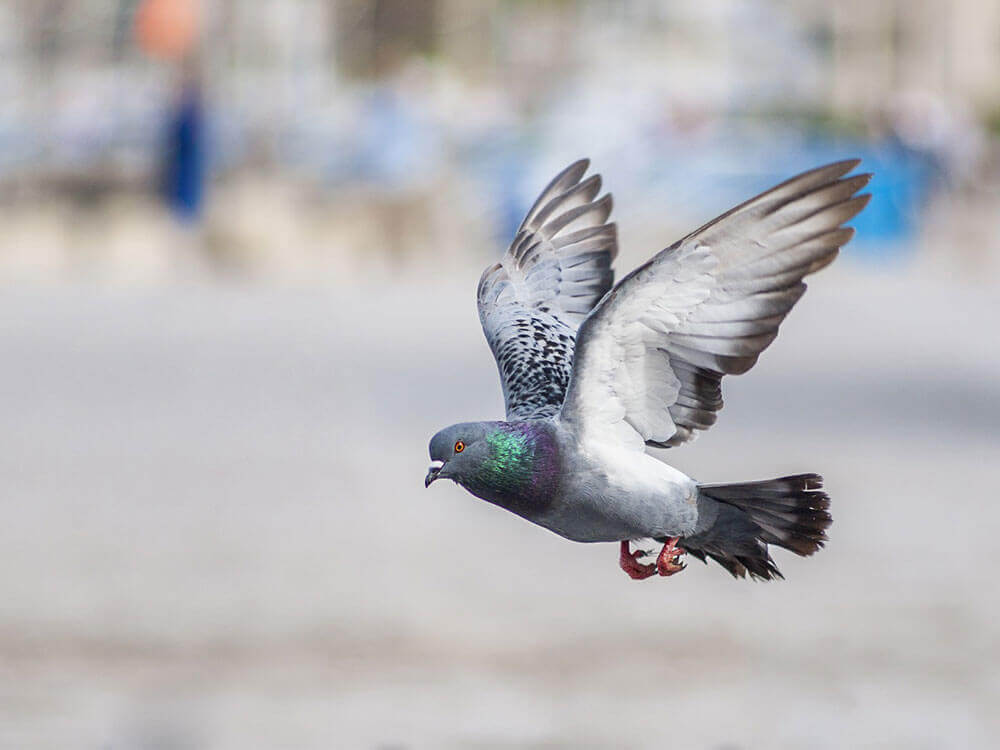
2- Turtle Dove
A Turtle Dove is a different size. It is smaller, and a bit darker when compared with the doves that have collars but it’s a more spacious than blackbirds. The chestnut and black colour and patterns on the wings makes them easy to recognize. In recent years the number of turtle doves have declined.
Length: 26-28cm
Population: 2,100 pairs
Wingspan: 50cm
Weight: 140g
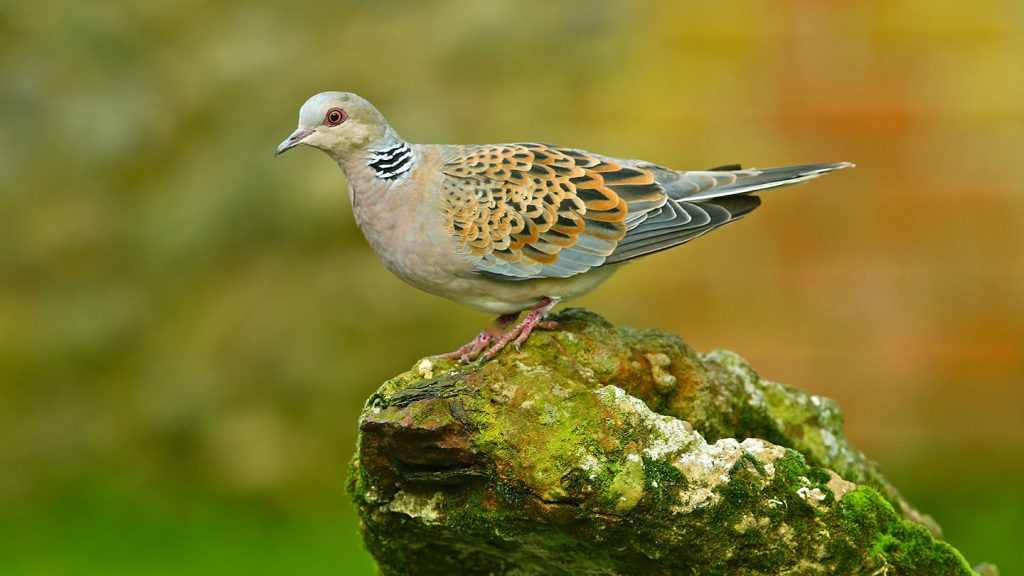
3- Collared dove
The dove with a collar is a tiny bird that is found in farms as well as in parks, woodlands and gardens all over the country. When breeding activity in the UK was first documented around 1950, the numbers have risen which is why the collared dove has become one of our most commonly seen garden birds.
Collared doves eat grains and seeds on the ground. They generally seen alone as well as in groups, though small flocks can form if there enough food available.
Length: 31-33cm
Population: 990,000 breeding pairs
Wingspan: 51cm
Weight: 200g
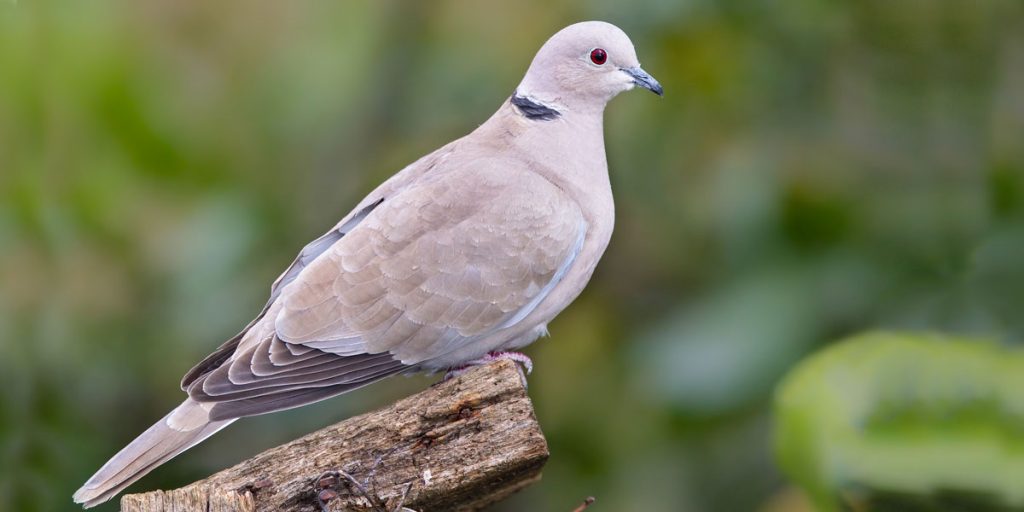
4- Stock dove
Stock dove lives in wooded farms that has a similar plumage as the wild rock dove, but with a jet-black eyes. It does not have the white feathers of the wood pigeon. When they fly, you will notice the black edges that are visible in their wings. They are everywhere in the UK with the exception of a few regions of Ireland as well as northern Scotland. Has a delicious insistent brooding call. The number of calls has decreased recently.
Length: 32-34cm
Population: 240,000 breeding pairs
Wingspan: 66cm
Weight: 300g
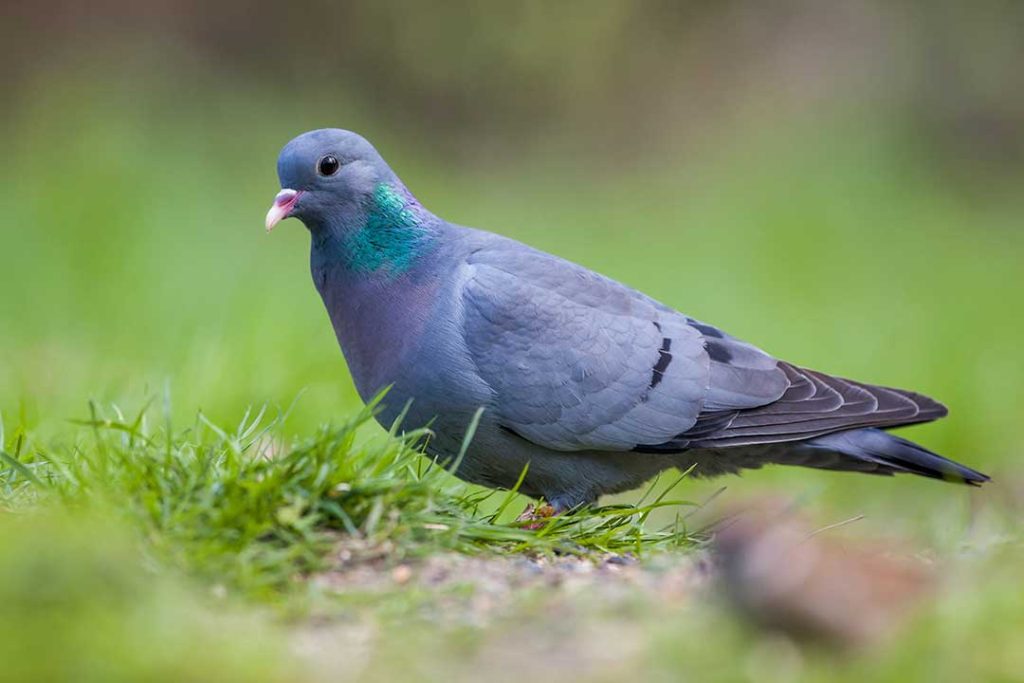
5- Woodpigeon
It is believed that the Woodpigeon is one of the most frequently observed pigeon typesin the UK It’s also the largest pigeon in the United Kingdom. Woodpigeons can be distinguished by its predominant grey colouring and white neck patch, and white patches on its wings which are visible in flight.
Wild or domesticated their blue necks and loud flap of the wings during their flight through urban areas can be easily identified.
Length: 40-42cm
Population: 5,150,000 breeding pairs
Wingspan: 78cm
Weight: 450g
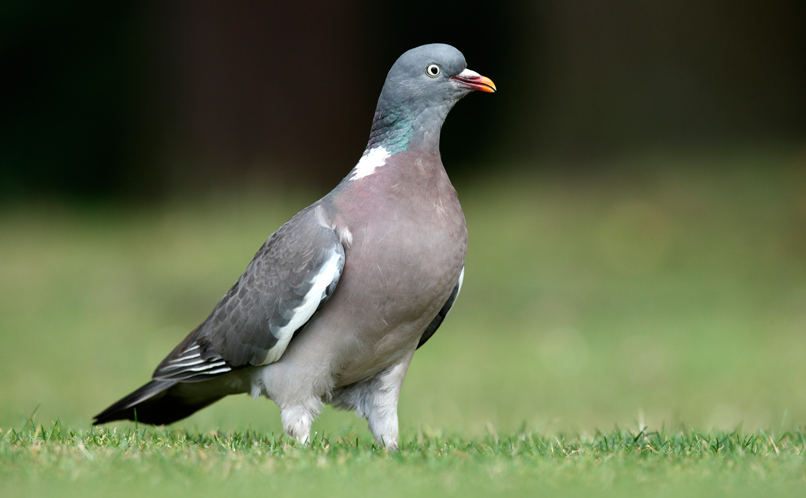
6- Rock dove
The wild ancestral ancestor of domestic pigeons, and, consequently, the ‘town bird’. Pure rock doves are scarce and are, within their native British Isles, now found only along the coasts of west and north Scotland and Ireland where they settle on the cliffs. Rock Dove pigeons now breed all over the world, with the exception of upland regions.
Length: 31-34cm
Population: 465,000 breeding pairs
Wingspan: 66cm
Weight: 300g
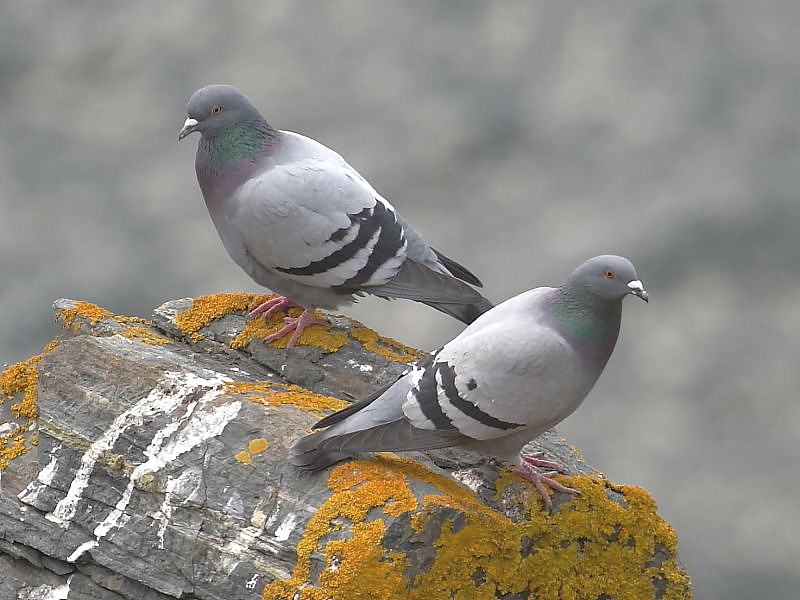
7- Fancy Pigeons
If you’re looking for pigeons that stand out with their extravagant plumage or unique body shapes, fancy pigeons are the ones to watch out for! From fantails with their distinctive tail feathers to pouters with their inflated crops, these birds are sure to catch your eye.
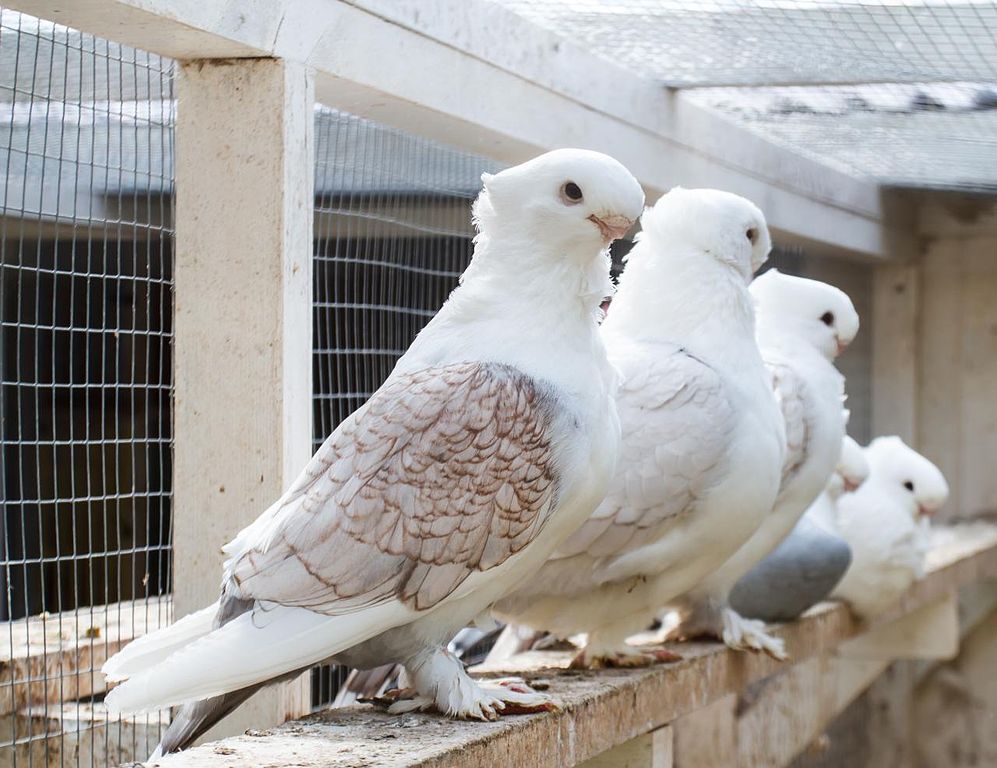
8- Homing Pigeons
As the name suggests, homing pigeons have an exceptional ability to find their way back home from unfamiliar locations. They possess an innate sense of direction and have been used throughout history as messengers.
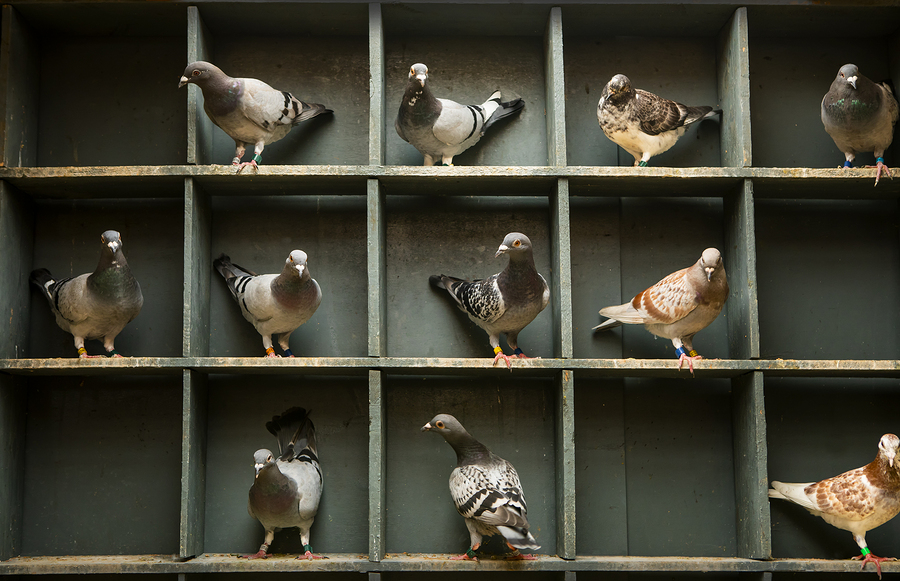
9- Tumbler Pigeon
One look at a tumbling pigeon will leave you amazed! These agile birds perform acrobatic maneuvers mid-air while descending rapidly towards the ground before pulling up at the last moment – truly a sight to behold!
10- Highflyers
As the name implies, highflyer pigeons possess remarkable aerial skills and can soar great heights effortlessly during flight displays.
11- English Carriers
Bred primarily as messenger birds in earlier times, English carriers feature a distinct head crest and strong flying abilities combined with diligent homing instincts.
12- Birmingham Roller
Pigeons that are well-known for their unique ability to perform backward somersault
10 amazing facts about UK pigeon type
Pigeons are fascinating creatures that have captured our attention for centuries. Here are 10 amazing facts about pigeon types UK that you may not know:
1. Pigeons have exceptional navigation skills. They can find their way home from up to 1,300 miles away!
2. Did you know that pigeons were once used as messengers during wartime? Their speed and reliability made them invaluable communication tools.
3. Pigeons are incredibly adaptable birds. They can thrive in both urban and rural environments, making them one of the most widespread bird species in the world.
4. Contrary to popular belief, pigeons are actually quite intelligent animals. They can recognize themselves in a mirror and even learn complex tasks.
5. Pigeon feathers come in a wide range of colors and patterns, making each bird unique.
6. Pigeon pairs mate for life and often display affection towards each other through courtship rituals such as bowing and cooing.
7. Pigeons produce a special “pigeon milk” to feed their young ones before they start eating solid food.
8. Peregrine falcons consider pigeons as one of their favorite prey due to its agility sense
9. Their beautiful wings allow them to fly at speeds of up to 60 mph (97 km/h), making them some of the fastest birds on Earth!
10. Pigeon racing is a popular sport worldwide where specially trained pigeons compete against each other over long distances using their remarkable homing abilities.
These incredible facts only scratch the surface when it comes to understanding these remarkable birds! There is so much more we could explore when it comes to pigeon breeds in the UK.
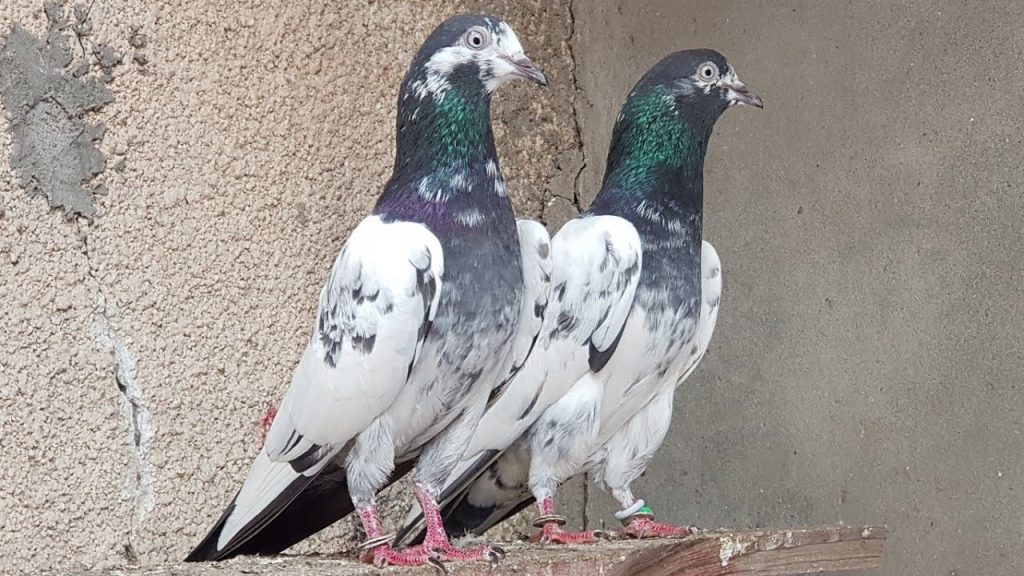
Popular Uses of Pigeons and How Different Breeds Excel in Them
Pigeons have been fascinating creatures for centuries, not only for their beauty but also for their unique abilities. These versatile birds have found a place in various fields, showcasing their skills in different ways.
One popular use of pigeon types UK is as homing pigeons. They possess an incredible natural instinct that allows them to find their way back home from long distances. This ability has made them valuable messengers throughout history, especially during times of war when communication was crucial.
Certain breeds, such as the Racing Homer and the Carneau pigeon, excel in racing competitions. Their impressive speed and endurance make them ideal contenders on the racetrack. Owners spend hours training these birds to reach top performance levels and compete against other enthusiasts.
Additionally, some pigeon breeds are bred specifically for exhibition purposes due to their striking appearance or unique features. The English Trumpeter with its distinctive feathered hood or the Indian Fantail with its elegant tail feathers are often showcased at bird shows around the UK.
Understanding the Different Pigeon types UK Population
The pigeon population in UK cities is diverse and widespread. From the common wood pigeon to feral pigeons, these birds have adapted well to city life. They can be found nesting on tall buildings, foraging for food scraps on busy streets, or roosting on statues and ledges.
One of the reasons why pigeons thrive in urban environments is their ability to adapt and take advantage of available resources. They are excellent scavengers and can easily find food sources such as discarded fast food or crumbs left behind by humans.
Understanding the pigeon types UK population requires recognizing their resilience and ability to coexist with humans. It’s important for us to strike a balance between managing any potential issues they may cause while appreciating their presence as part of our urban environment.
Caring for Your Pigeons: Diet, Housing, and Health Considerations
Caring for your pigeons is crucial to ensure their health and well-being. Proper diet, suitable housing, and regular health considerations are essential for keeping these majestic birds in top condition.
When it comes to their diet, pigeons require a balanced meal consisting of grains, seeds, fruits, and vegetables. Commercial pigeon feed can also be incorporated into their diet to provide necessary nutrients. It’s important to note that providing fresh water at all times is vital for hydration.
Health considerations play a significant role in pigeon care as well. Regular check-ups with an avian veterinarian are recommended to monitor their overall health and detect any potential issues early on. Vaccinations against common diseases like paramyxovirus should also be administered.
Tips for Choosing the Right Pigeon Breed for You
When it comes to choosing the right pigeon types UK breed for you, there are a few key factors to consider. First and foremost, think about your own preferences and goals as a pigeon owner. Are you looking for a breed that is known for its beauty and showmanship? Or perhaps you’re more interested in racing pigeons that can reach incredible speeds?
Next, consider the amount of time and effort you’re willing to invest in caring for your pigeons. Some breeds require more attention and maintenance than others. If you have limited time or are new to pigeon keeping, it may be best to start with a low-maintenance breed.
Another important factor is space. Different pigeon breeds have different space requirements, so make sure you have adequate housing facilities before bringing home your feathered friends.
Additionally, take into account the climate in your area. Certain breeds are better suited for colder climates while others thrive in warmer temperatures.
Pigeon Types UK Conclusion
In this Pierdom blog, we have explored the fascinating world of pigeon types and breeds in the UK. From their rich history and evolution to their physical characteristics and unique features, pigeons are truly remarkable creatures. We have learned about the different types of pigeons found in the UK and discovered some amazing facts about them.
Each breed has its own strengths and abilities, making them excel in various popular uses such as racing, show competitions, and even messenger services. Pigeons have played a significant role throughout history, carrying messages across long distances with incredible speed and accuracy. Embrace these resilient birds’ presence in our cities while appreciating all they contribute to our lives!

